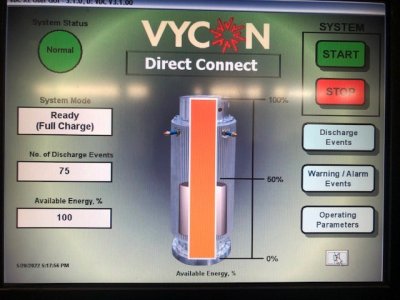Dealing with lightning is kind of crazy, and many times a challenge. IMO, everything you do is all about prevention, and you hope you get it right. Thankfully there's already a plethora of information out there to help you get it right. Certain areas of the US have better ground conductivity than others, which also plays a part in quickly discharging that lightning strike into the ground. I've never worked in low soil conductivity areas, but I've read you need to take extra steps with chemicals, compared to high soil conductivity areas that don't need those chemicals.
One area was always kind of a sore spot for me, and that was analog phone lines. In my case, every analog phone line needed to have it's own surge protection on it. In the good ol' days of analog phone lines, if you had 50 lines coming into a building (like sometimes in my case), that could be quite a chore sometimes to install all of that surge protection, and even that didn't always guarantee a lightning strike wouldn't find its way into your telecom equipment, or studios. We once had a major electrical thunderstorm roll through, and I remember being called to one of the studios, because the "phone"s had now developed a severe hum, and I realized that the phone module in the console had suffered lightning damage. The strike had passed the phone hybrid without doing damage, but still took out the console phone module. Upon arrival in the studio, you could definitely smell something had fried. Luckily I had a replacement phone module on hand. Thankfully the rest of the on-air console was working with no further damage. I don't know if the jock was taking calls when the damage took place or not, but one of those strikes found its way into the console. Thankfully, I think out of hundreds of pieces of equipment, that was the only damage during that storm. I also remember during that storm that a female's window in the Traffic Department faced the base of our 425' self supporting tower, and she could constantly see lightning jump over the base insulators. She was so freaked out seeing this, that she asked to leave for the rest of the day. I also had a different facility at a different time in my career, in which I was always working on improving the internal building ground system. With my workload, it was something I couldn't always concentrate on, and would need to go back to it, again and again, when I had time. Well, a late night thunderstorm blew through one day, and did some damage. It was really interesting to see what equipment in the building was effected. Who would think that 1 out of 4 HVAC thermostats would suffer damage? There were spotty areas in the building in which some equipment also suffered lightning damage.
If I wasn't already in the building at the time, after a thunderstorm, I would usually go into our facilities just to inspect, and make sure everything was running the way it should. With lightning damage, it doesn't *always* immediately rear its ugly head. Sometimes down the line a piece of equipment would just fail out of the clear blue, and I would wonder sometimes if it was due to past lightning damage. In certain situations, you could visually see when a lightning strike found its way into a building, and arc'd over, trying to find a better ground to discharge on. Lightning is crazy.





